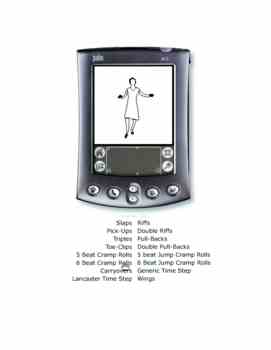The In Crowd
Marisa S. Olson checks out who’s in and who’s out in the new media section of The Whitney Museum of American Art’s 2002 Biennial Exhibition The world of new media is a small one. Despite the persistence of a few distinct circles of artists generally distinguished by their use of specific media, these circles all overlap in a messy matrix of a Venn diagram. It’s as if the Surrealists, who were known as much for their ideas as the influence on those ideas by their tight social network, were scattered around the world and held their salons in all-night instant messaging fêtes. Maybe it is the relative youth of the ‘movement’ – which would, conceivably, limit the number of artists working in the field, as opposed to, say, painters? Maybe it’s the easy access to, at least, the web-based work, or the widely accessible venues for discussion and promotion of new media? In any case, most everyone knows most everyone else, and it was very easy to predict whom the Whitney would choose to comprise the ‘new media’ portion of the 2002 Biennial.
Of course, there were a few surprises. Amy Franceschini was noticeably unidentified as a founding partner in Futurefarmers. Erik Loyer, Joshua Davis, Mark Amerika, and a handful of other important net artists were overlooked (to say nothing of media artists working offline). One might chalk this up to working on the outer fringe of the aforementioned Venn diagram, but this theory is blown apart by the unfortunate overlooking of the Radical Software Group (RSG). Founded by Alex Galloway, the group’s work has thus far revolved around Carnivore, Galloway’s surveillance engine that resembles that of the US FBI. Members include ’02 Biennial artists Lisa Jevbratt, John Klima, Mark Napier, and a cadre of all-stars who failed to garner Whitney inclusion.
 >> Tap, James Buckhouse Somehow, including Jevbratt and Napier feels long overdue, while the participation of, say, James Buckhouse (whose PDA project, Tap, is the cover-image for the web-based portion of the show) reminds us of the power of networking, and the ability of new media’s younger artists to do so, in auguring for a Biennial slot. Buckhouse is, of course, brilliant and talented, while he’s been far less prolific than most of his peers in the show. Then again, how much work can we expect the young artists in this young field to have made? Certainly, the standards by which we call an artist ‘emerging’ have been shifted by the rapid pace of change in the new media canon.
>> Tap, James Buckhouse Somehow, including Jevbratt and Napier feels long overdue, while the participation of, say, James Buckhouse (whose PDA project, Tap, is the cover-image for the web-based portion of the show) reminds us of the power of networking, and the ability of new media’s younger artists to do so, in auguring for a Biennial slot. Buckhouse is, of course, brilliant and talented, while he’s been far less prolific than most of his peers in the show. Then again, how much work can we expect the young artists in this young field to have made? Certainly, the standards by which we call an artist ‘emerging’ have been shifted by the rapid pace of change in the new media canon.
The American focus of the Biennial is ironic, when it comes to exhibiting new media art, which is so often the product of international collaboration and frequently comes in the form of internationally-distributed internet-based art, a condition referenced in Mark Napier’s Guggenheim-collected ‘net.flag’ project. There are plenty of gifted Americans, or artists working in America, though one gets the sense that even if the show were open to foreigners, there would be no surprises. We’d just make way for insider favorites like Heavy Industries, Etropy8Zuper, and JODI.org.
Marisa S. Olson <marisa AT mail.concentric.net> is an artist, writer and freelance curator living in London and San Francisco
Mute Books Orders
For Mute Books distribution contact Anagram Books
contact@anagrambooks.com
For online purchases visit anagrambooks.com







